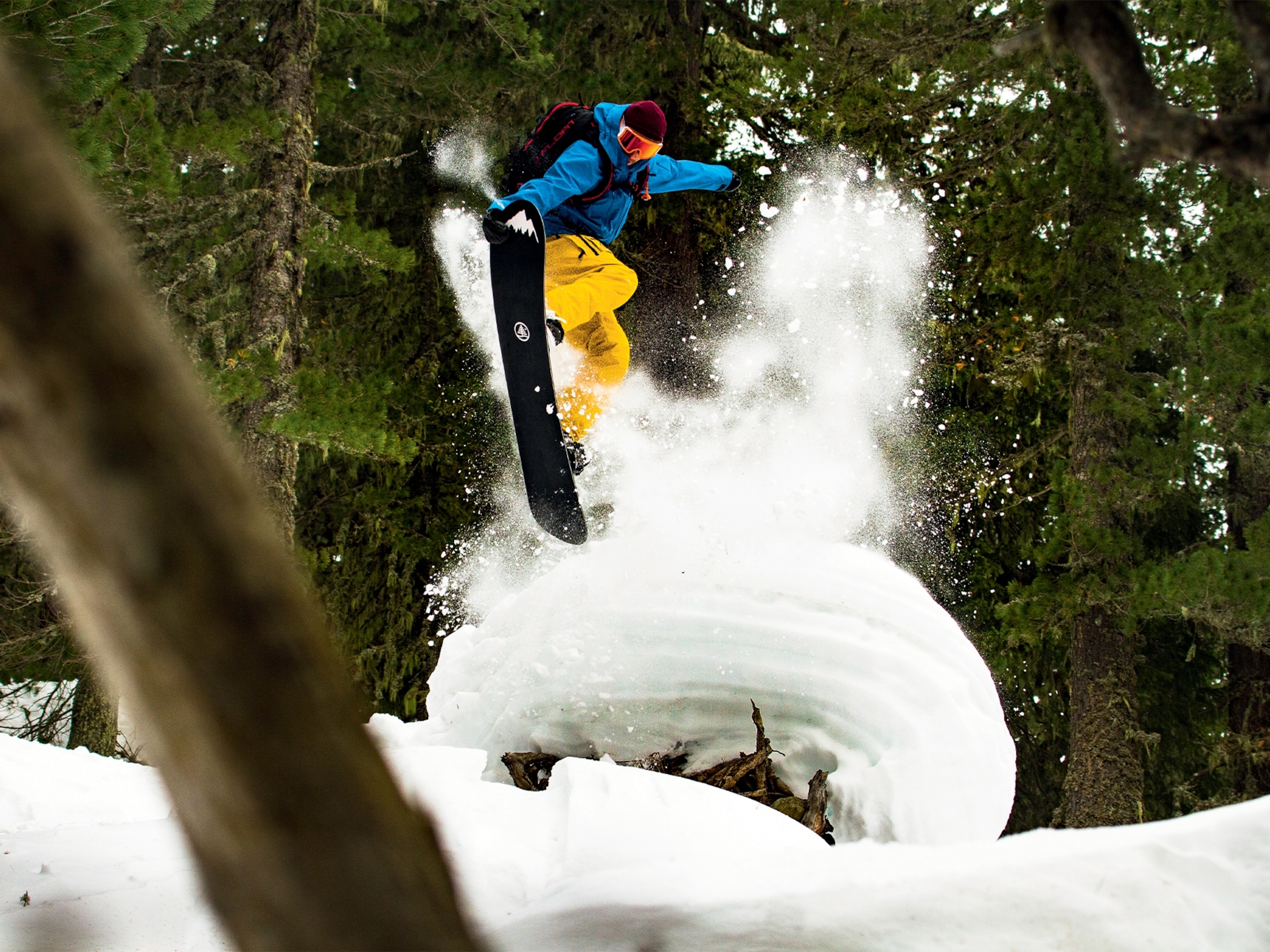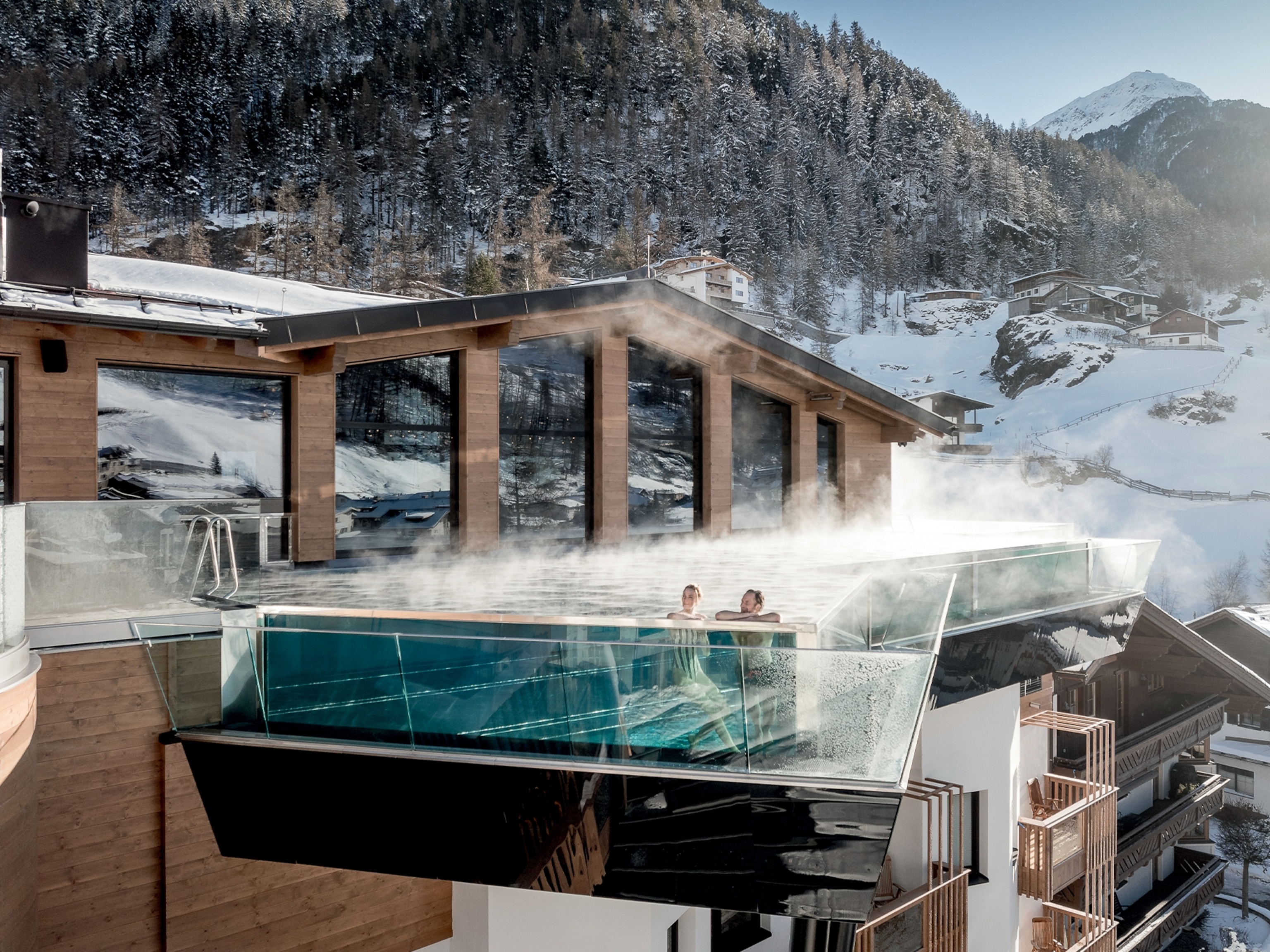Go ice skating beneath the aurora borealis in the Swedish Arctic
Swap overcrowded ice rinks for the real thing, and skate beneath the aurora borealis on the frozen sea in Swedish Lapland.
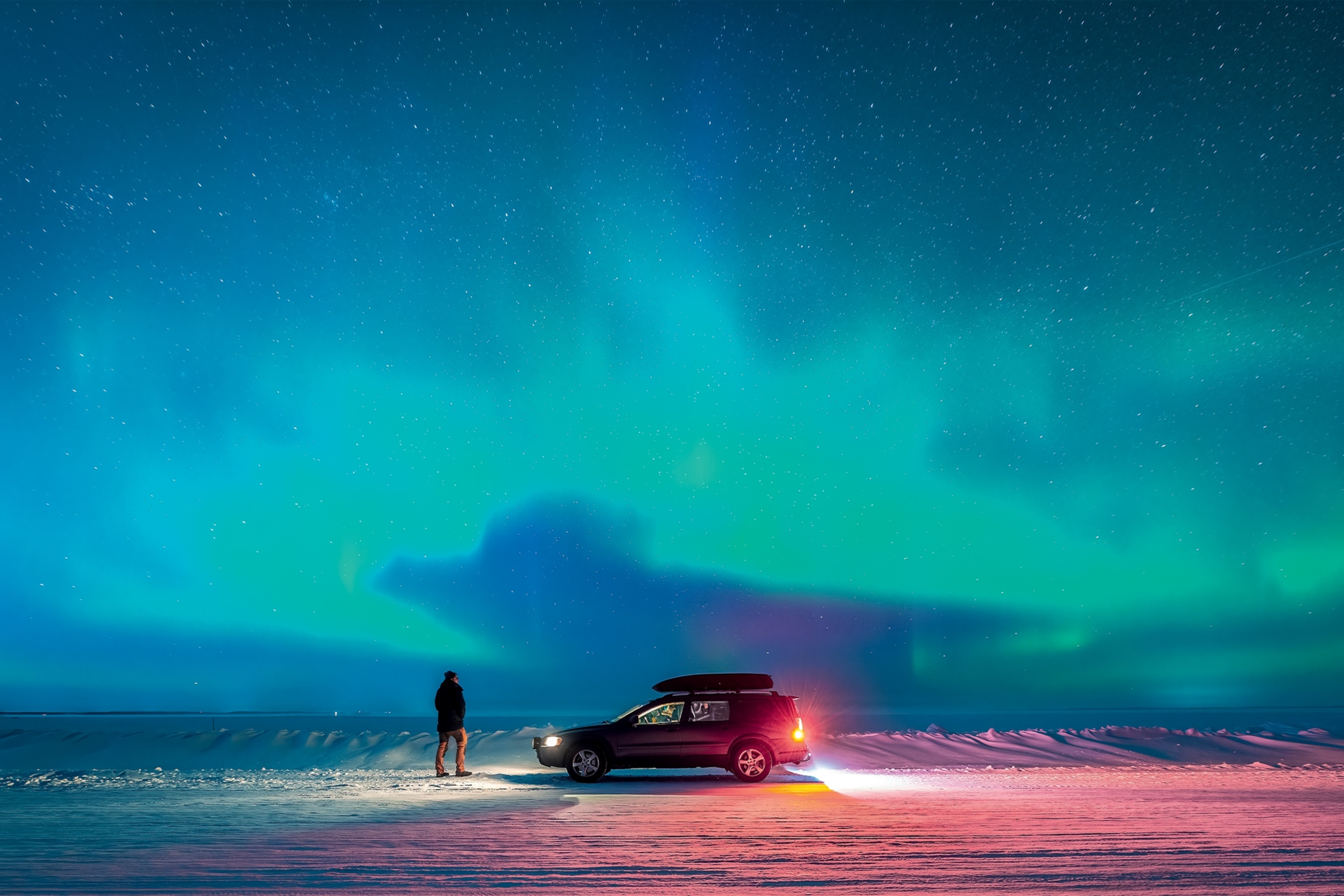
Clipping blades to my boots, I push off tentatively. Gliding across the ice, I maintain my balance by locking eyes with the skyline, which is bathed in marshmallow pink. As a bronze-level figure skater, I’ve always dreamt of skating on natural ice in the great outdoors. And now here I am, on the winter solstice, in Luleå in Swedish Lapland — just 68 miles south of the Arctic Circle.
The solstice has granted me three hours of daylight, and even at lunchtime, the lightest point of the day, the sun threatens to slip beneath the horizon, turning the sky twilight-blue. This doesn’t faze Scandinavians, who’ve ice skated as a means of travel since the late 1300s. In winter, Luleå’s coastal waters freeze over. In 2004, the opportunity to use this for skating proved irresistible, and a Luleå resident persuaded the council to plough the snow to create a looped, eight-mile ice track.
Word spread, and now the circuit is in its 20th year, attracting 150,000 visitors annually. Climate change has played a role, as warmer temperatures push skaters north — every February, the Royal Dutch Skating Federation organises its annual Grand Prix in Luleå. The city’s course loops from its North Harbour to a disused crane in the South Harbour, from where skaters like me can detour to Gråsjälören island.
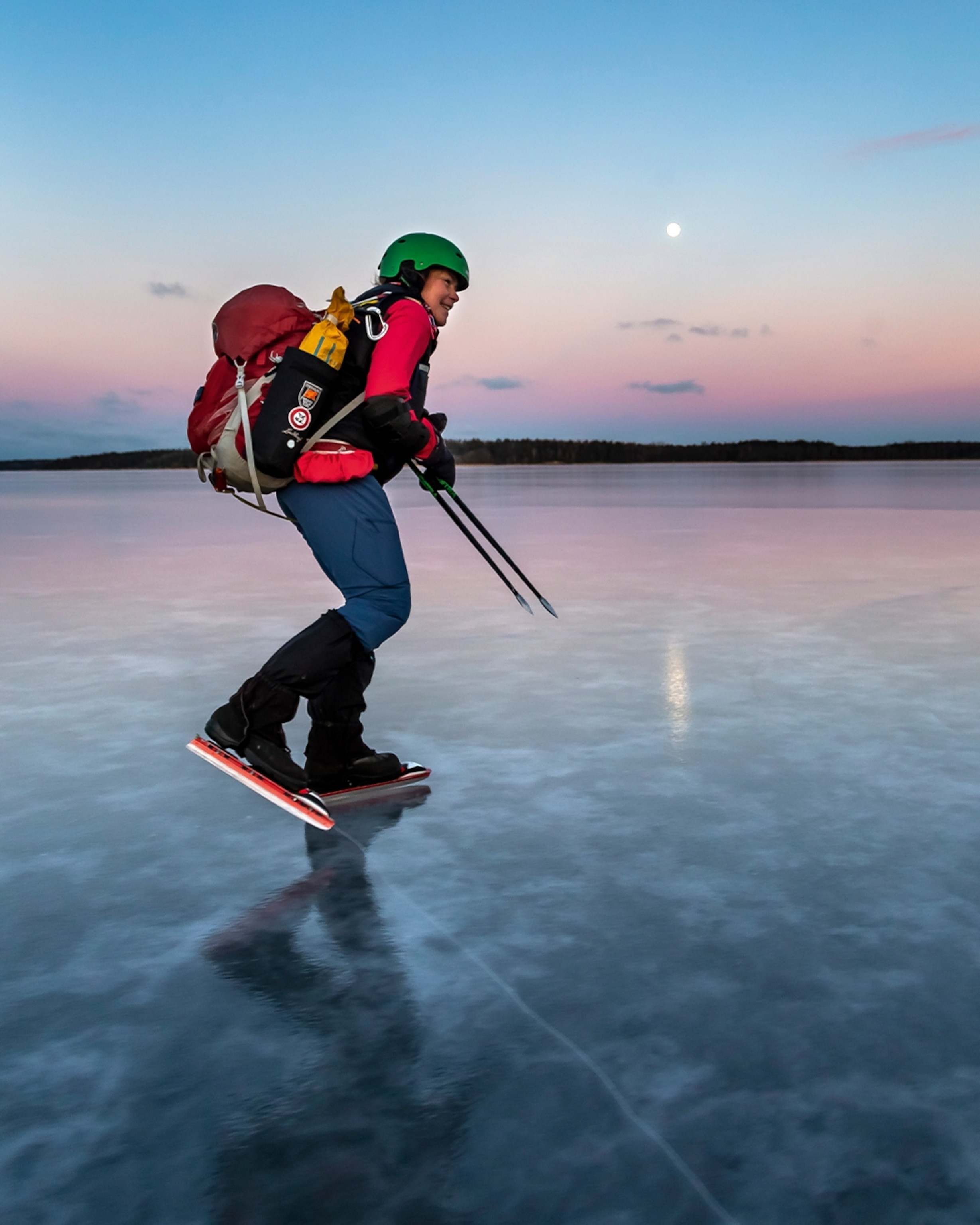
I’m one of the first skaters this winter, so I pass only a handful of locals, kicksledding (a traditional method of transport that resembles a chair on skates) and walking dogs, and a lone fisher waiting by the hole he’s made in the ice for perch to bite. “Hej hej [‘hi hi’],” he nods. Wild skating, or tour skating, has been popular among the Dutch and Scandinavians for over 100 years. The main trend is ‘river bagging’ — a bit like ‘mountain bagging’ for climbers — which has grown alongside the technology that tracks skaters’ distances. That said, some skaters don’t consider Luleå’s ice track to be true wild skating, even though it’s outside, because snow ploughs are used to clear it.
The following day, I meet Ari Hultqvist, the head of the Swedish Outdoor Association, who came fifth in a Skridsko ranking, an informal Swedish league, for skating 1,794 miles in winter 2022-2023. I join him for a 90-minute skate between Luleå’s harbours, beneath a crescent moon. Conditions are poor; there’s a dusting of snow on the track, which threatens to trip us up. We persevere like cyclists wobbling through sand, skating slowly, breathing steadily, my scarf crispy with icicles. We’re alone in the dark, our headlamps limiting our vision to three metres but bright enough to make the ice glisten like diamonds.
Where the ice is thinnest, under Bergnäs Bridge, it fractures without warning, like crème brûlée under the tap of a spoon. My heart stops. “We’re perfectly safe,” Ari reassures me. “The ice is 50cm — strong enough for snow ploughs. Just the top layer is cracking.”
It’s unnerving, but soon I’m distracted by another marvel — the aurora borealis marbling the sky. No wonder Ari gets a kick out of skating outdoors. “I like the sound of skating,” he grins, shooting an imaginary gun with his fingers. “Pew! Pew! Cracking ice sounds like Star Wars. It’s also artistic. Yesterday, when the sun shone, the ice looked like pearls; the crystals were all facing different directions.”
I’m slightly placated by these poetic words as we plough onwards. “Skating at night is difficult and dangerous,” says Ari. “It’s not for everyone. But if there’s a full moon and snow nearby it’s not that dark and it’s beautiful. Instead of animal tracks and forest you see stars and there’s an element of surprise.”
But there are more surprises, lurking unseen. Black ice. The thrill of navigating this thin, transparent ice is, for some skaters, the holy grail of outdoor skating, and they travel by snowmobile to seek it out. “If you’re skating on black ice beneath a black sky, you can’t see where the ice meets the sky. It’s like, ‘Poof! What just happened?’ It’s like you’ve entered outer space. You just have to hope there’s more ice ahead of you.”
But black ice is unpredictable and in northern Sweden there’s a short window for it — early in the season, when the sea has frozen but the snow is yet to fall. That doesn’t stop skaters like Ari longing for it. “It takes effort to find black ice — a full day or longer. We snowmobile on 10 or 15cm of ice, driving slowly and using satellites and radars to guide us. Sometimes when we snowmobile on strong, thick ice there’s running water next to us created by warm currents that means some of the water doesn’t freeze.”

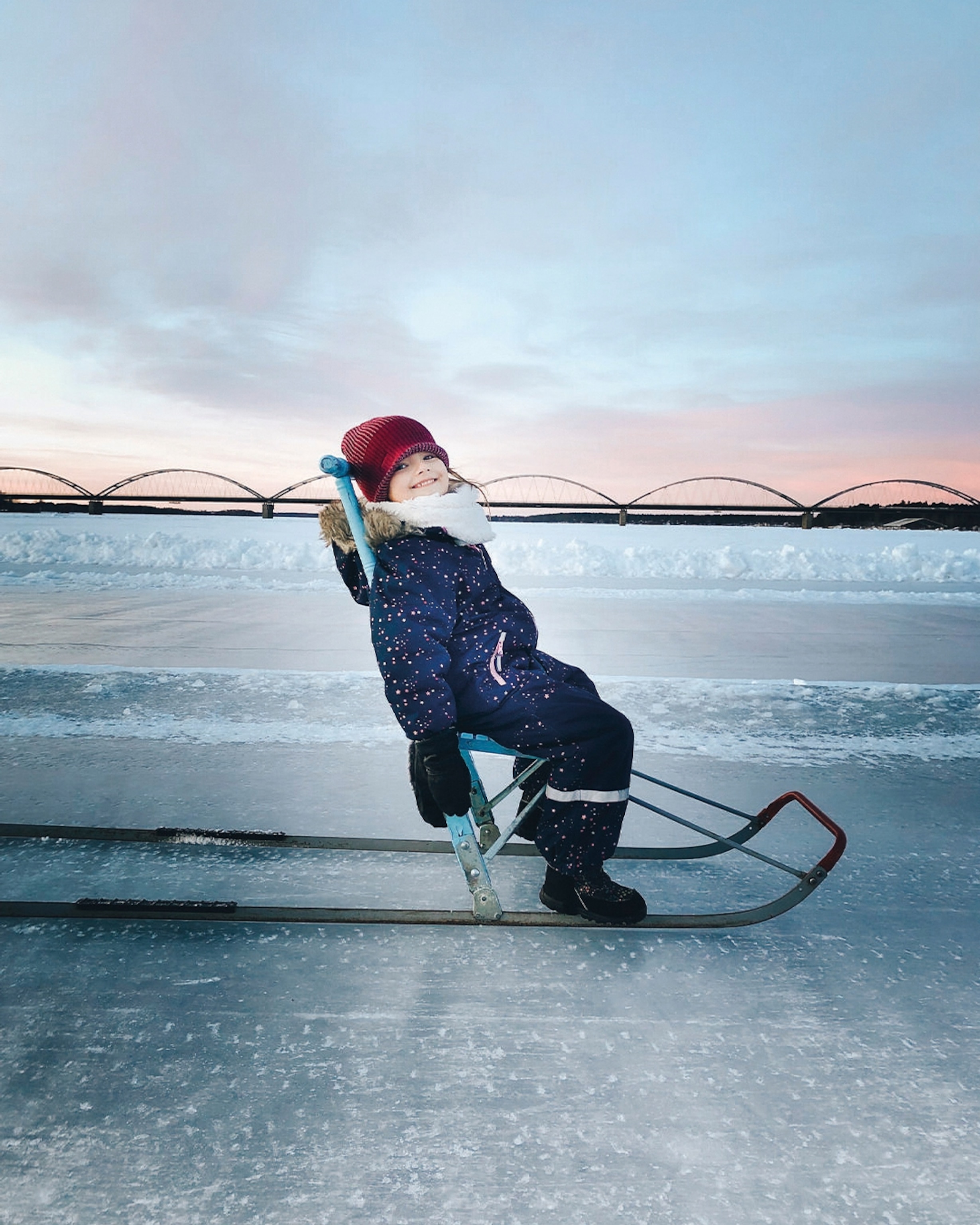
I myself have long dreamt of ‘tour skating’ — skating long distance across frozen rivers. For years, I’ve imagined gliding past waterfalls on lakes gleaming like polished mirrors, the only sounds being my blades scraping the ice and the snort of a moose in a forest. As well as being sustainable, wild skating has a meditative quality; it’s a way to reconnect with nature and be mindful. It’s also about having an adventure and taking chances. It’s not free from risk — it’s best to travel with a local guide, and skaters are legally required to carry dry clothes and ice picks in case they fall through the ice.
But the window for tour skating is narrow. Skaters must wait for the beginning of winter — when waterways freeze enough to take their weight — yet they must also skate before snowfall, as snow hides cracks and insulates ice, making it more likely to collapse. Alas, weather conditions mean I’ve missed my chance.
For experts like Ari, al fresco skating is a calculated risk. “I skate in groups for safety reasons,” he says. “When you fall in, it’s not instant: you break the surface and the ice crumbles in slow motion, like quicksand — and there’s nothing you can do about it. You just blow your whistle, then your friends come at 15mph to save you.”
Ari mitigates the risk by wearing ice picks around his neck and carrying a dry bag filled with ropes and a change of clothes. “The air in the bag also helps you float,” he explains. Luckily, I don’t fall in, although I don’t find any black ice to skate on, either — but I’ll settle for that marshmallow pink sky any day.
How to do it
Rooms at Hotell Savoy from £127.
Luleå’s ice track usually opens from January to March. Skate hire from Äventyrsbutiken costs £22 per day.
A four-day guided skate tour in Sweden costs from £742 per person, all inclusive (flights additional).
More info:
swedishlapland.com
visitlulea.se
This story was created with the support of Visit Sweden, Swedish Lapland Visitors Board and Scandinavian Airlines.
To subscribe to National Geographic Traveller (UK) magazine click here. (Available in select countries only).




